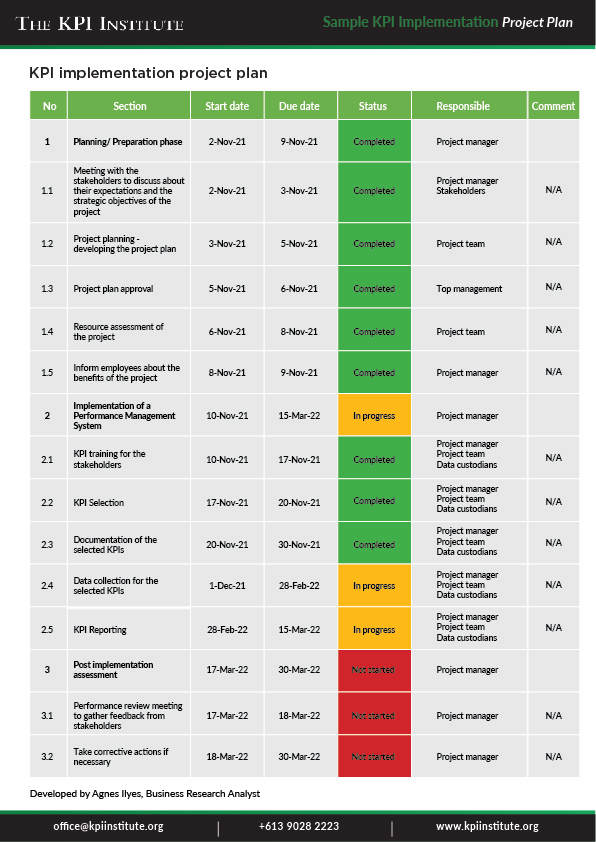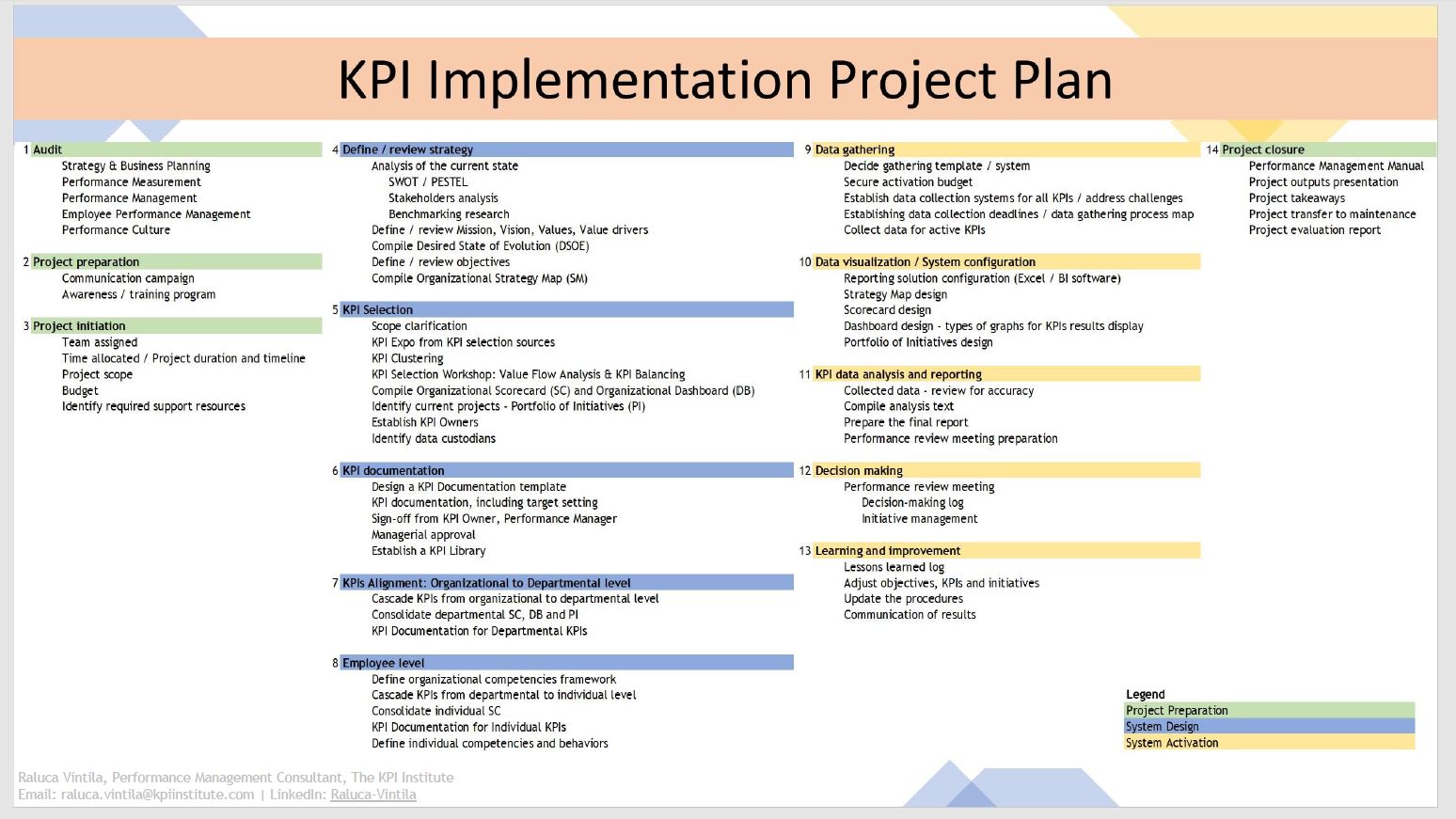How To Implement a KPI Measurement Framework

Source: geralt | pixabay.com
A well-functioning KPI measurement framework is more important then ever. In the fast-changing post-COVID-19 environment, organizations without a well-designed performance management system are not able to collect data-driven and real-time feedback, which is more important than ever because organizations need to make quick decisions as they respond to new challenges.
Organizations with no formal KPI measurement framework in place might consider implementing KPIs, and this process starts with a KPI implementation project plan.
The importance of a KPI implementation project plan
A KPI implementation project plan provides a structure for the implementation of an organization’s performance management system. Once the project plan is set, all types of activities would have a clear deadline and designated responsibilities.
Because a KPI implementation plan lays out all pertinent details, it promotes effective communication among the stakeholders of the project and reduces the impact of the project implementation gaps. Some of these gaps are the lack of buy-in from key stakeholders, unrealistic deliverables, and the inefficient assessment of organizational resources.
A good plan also serves as a compass for employees and other stakeholders in uncertain times because it guides stakeholders/employees towards reaching the strategic objectives of the organization.
Project plan stages
The most common elements of a KPI implementation project plan are key activities, deadline, responsibility, status, and comments.
A KPI implementation project plan must be aligned to the organizational strategy and objectives. Before the implementation starts, a meeting with the stakeholders of the project should be organized to discuss their expectations and make sure that everybody is on the same page. After the plan is developed by the project team in coordination with the project manager, the resource assessment of the project needs to be created. Then, another meeting with all employees is necessary in order to share the vision and benefits of such a project and delineate the first tasks to be finalized.
The second phase is the actual implementation of the performance management system. Start with proper training for the stakeholders to establish a common language and to avoid any misunderstanding. The appropriate KPIs should be selected in a KPI selection workshop. Then, they should be documented using a pre-defined, standardized template. Moreover, the data should be gathered and reported by the data custodians. The report should be presented with good visuals that are easy to interpret. This will help ensure a clear and effective decision-making process.
During the post implementation assessment phase, a performance review meeting should be conducted to gather feedback from internal stakeholders and analyze the situation and the progress of the result. It is also important to evaluate the possible corrective actions to be addressed in the performance management system.
KPI implementation project plan example:

Conclusion
In order to arrive at the benefits of a well-functioning KPI management system, companies need to understand how to efficiently implement it and to ensure that all employees have a clear picture of the whole system.
Find out more about the performance management system implementation process through The KPI Institute’s Certified KPI Professional and Practitioner course.


